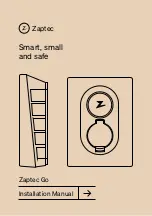
Whenever you depart, be it from your home, rest area, or campsite. You should
perform these pre-travel checks:
Should be inspected before each trip for uneven wear, road damage, foreign ob-
jects, peeling or bulging, and correct tire pressure. Heat generated by surface friction
will increase the tire’s air pressure, therefore do not bleed air out of a hot tire. Check
tire pressure after the vehicle has been parked for at least one hour. Infl ate tires to
recommended pressure as indicated on the Federal Certifi cation Label located above
the Drivers area. (See maintenance schedule on page 71.)
Proper tire infl ation is extremely important.
When purchasing a new tire, be certain it is the same size and has
the
same ply rating and load range as the original tire.
DO NOT mix radial
ply with bias or bias-belted
tires.
Must be tightened to the specifi cations in the Chassis Manufacturer’s Owner’s
Manual.
Should be clean, wiper blades inspected, and windshield washer reservoir fi lled.
Should be tested, including brake lights, warning fl ashers, clearance lights, tail lights,
turn signals and headlights. Clean all lens covers.
Should be adjusted so the driver can see to the rear on both the right and left side
of the unit.
(120 Volt shoreline) must be unplugged from the external source and properly stored
for transit, also making sure the cord hatch is secured.
Hoses must be disconnected, properly drained and stored, and the caps and hatches
secured. Fill the fresh water tank as required prior to storing hoses.
Should be emptied from the holding tanks before traveling. Termination valves must
be closed and locked. The sewer hose must be removed from the termination
valve outlet and stored. Termination cap must be securely fastened to the termina-
tion outlet.
Must be returned to its travel position. Pay special attention to this every time you
move your unit. Severe damage may result if not retracted during transit.
Levels at the monitor panel should be checked, and gas line connections should be
checked for leaks.
Some states prohibit vehicles equipped with LP gas tanks from using
tunnels. A few other states prohibit traveling with the service valve
open
and the pilot lights lit. Check the regulations of the
states through which
you intend to travel.
Chapter 2 - Planning and Preparation
TIRES
WHEEL LUGS
LIGHTS
REARVIEW MIRRORS
POWER CORD
WATER FILL
SEWAGE
ENTRY STEP
LP GAS TANK
WINDSHIELD
PRE-TRAVEL CHECK
Summary of Contents for Astoria 2006
Page 1: ...Owners Manual ...
Page 10: ...Introduction ...
Page 58: ...Chapter 8 Exterior Systems ...
Page 76: ...Chapter 10 Winter Use and Storage ...
Page 82: ...76 Notes ...
Page 83: ...77 Notes ...
Page 84: ...78 Notes ...
Page 85: ...79 Notes ...
Page 86: ...80 Notes ...
Page 97: ...91 Electrical Diagrams ...
Page 98: ...92 Electrical Diagrams ...
Page 99: ...93 ...
Page 100: ...94 Electrical Diagrams ...
Page 101: ...95 Electrical Diagrams ...
Page 102: ...96 Electrical Diagrams ...
Page 103: ...97 Electrical Diagrams ...
Page 104: ...98 Electrical Diagrams ...
Page 105: ...99 Electrical Diagrams ...
Page 106: ...100 Electrical Diagrams ...
Page 107: ...101 Electrical Diagrams ...
Page 108: ...102 Electrical Diagrams ...
Page 109: ...103 Electrical Diagrams ...
Page 110: ...104 Electrical Diagrams ...
















































